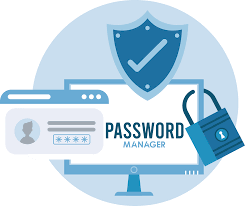In an era when the cyber realm has become increasingly unpredictable, businesses are grappling with a myriad of challenges like never before. Over the past five years, the digital landscape has transformed into a battleground rife with threats that can emerge at any moment. From Distributed Denial of Service (DDoS) attacks to the menacing spectre of ransomware, vulnerabilities within third-party supply chains, and the relentless expansion of potential points of entry for attackers, the list of concerns is daunting.

However, there is a silver lining amidst this chaos: effective solutions exist to mitigate these threats. The key lies in adopting strategies that proactively prepare organisations for when these attacks inevitably occur. By combining established best practices with forward-thinking initiatives, companies can fortify their defences against a wide array of vulnerabilities.
To assist enterprises in navigating the treacherous waters of cybersecurity, Cyber Magazine has compiled a comprehensive guide outlining the ten most effective strategies for enhancing overall cyber resilience. These strategies serve as a roadmap for businesses eager to safeguard their digital assets and fortify their defences against the ever-evolving threats lurking in the cyber shadows.
In the ever-evolving landscape of cybersecurity, a notable shift is taking place, particularly within the corridors of a leading firm like Accenture. The call for enhanced security measures has never been more pressing, and at the forefront of this movement is the adoption of multi-factor authentication, or MFA. This transition is not just a technical upgrade; it is a vital step in fortifying the defences surrounding sensitive accounts—especially those that hold significant power or grant remote access to invaluable assets.
Imagine a world where accessing an application, an online account, or even a virtual private network requires more than just the simple entry of a password. MFA introduces a robust mechanism that demands users to present multiple forms of verification before they can unlock these crucial resources. It’s akin to having a fortress where not only do you need a key (the password) to enter, but you must also show a badge (a physical token) or perhaps even undergo a fingerprint scan (biometric verification). This multi-tiered approach creates an intricate web of security that significantly bolsters protection against potential breaches.
The implications of adopting MFA are profound. By weaving this additional layer of security into their operations, organisations can dramatically mitigate the threats posed by credential theft and unauthorised access. The scenario where cybercriminals successfully infiltrate accounts becomes increasingly unlikely, even if they manage to snatch away passwords. With MFA in place, accessing critical information transforms from a straightforward task into a much more formidable challenge for those with ill intentions.

Thus, as companies like Accenture embark on this journey towards implementing multi-factor authentication, they are not merely adopting a new technology; they are embracing a philosophy of vigilance and resilience in safeguarding their digital realms. In doing so, they take significant strides towards a more secure future, where the integrity of their systems and data remains intact amidst the relentless tide of cyber threats.
In the ever-evolving landscape of cybersecurity, where dangers lurk at every corner, organisations have found themselves in a race against time. Among the key players navigating this treacherous terrain is Mandiant, a name synonymous with cutting-edge threat intelligence. One of the most strategic moves companies can make in their pursuit of safeguarding their digital assets is to incorporate threat reputation services into their security frameworks.
Imagine a vast network of interconnected data points, each representing a file, a URL, an IP address, or even an email. These elements, while seemingly innocuous on their own, can harbour threats that could jeopardise an organisation’s entire infrastructure. By harnessing the power of threat reputation services, organisations gain access to a wealth of information derived from multiple sources. This multifaceted approach allows them to discern which entities are trustworthy and which may pose a risk.
As organisations integrate these services, they find themselves equipped to respond with agility to threats that span the globe. They are no longer left vulnerable to the whims of malicious actors; instead, they can proactively shield themselves against known weaknesses. The ability to swiftly identify and mitigate risks not only fortifies their defences but also instils confidence in their operations.
Moreover, this integration fosters a collaborative environment where organisations tap into a broader spectrum of threat analysis than they could achieve in isolation. In a world where threats can emerge and evolve in the blink of an eye, having access to a dynamic and comprehensive threat reputation service becomes an invaluable asset. It transforms the organisation’s security posture from reactive to proactive, allowing them to stay one step ahead of potential adversaries.
Thus, as the digital realm continues to expand and threats become increasingly sophisticated, the integration of threat reputation services stands out as a crucial strategy for those committed to maintaining robust cybersecurity. It is not merely a precaution; it is a pivotal element in the ongoing battle for safety and integrity in the digital age.

In the ever-evolving landscape of cybersecurity, the importance of safeguarding critical networks cannot be overstated. One company at the forefront of this battle is Palo Alto Networks, which champions a method known as an application-aware defence for network segregation. Picture this strategy as a fortified castle, where each vital chamber is meticulously isolated to ensure that only authorised visitors can enter.
This approach goes beyond mere barriers; it employs intelligent defences that possess a keen understanding of the data flowing through applications. Imagine these defences as vigilant sentinels capable of discerning between legitimate and harmful traffic. They don’t just stand by idly; they actively block malformed requests and enforce strict content regulations, all while adhering to established policies and legal guidelines.
As we navigate through an era where traditional intrusion detection systems struggle against the rising tide of encryption and obfuscation techniques, the significance of application-aware defences becomes glaringly apparent. These advanced tools are like skilled detectives, adept at uncovering threats that attempt to disguise themselves within the fabric of everyday protocols. With their ability to identify and neutralise hidden malicious activities, organisations can fortify their networks against sophisticated adversaries known as advanced persistent threats (APTs).

By embracing this modern approach to security, companies can enhance their protective measures and substantially reduce the risk of devastating data breaches. This proactive stance in a world where the stakes have never been higher ensures that the digital realms they oversee remain secure from lurking dangers.
In today’s digital landscape, where cybersecurity threats loom more significant than ever, one company stands out as a beacon of innovation and protection—Intel. Imagine a world where your data and systems are under constant siege from malicious actors aiming to exploit every vulnerability they can find. In this high-stakes environment, leveraging cutting-edge hardware security features has become not just a recommendation but a necessity for organisations striving to uphold a strong cybersecurity framework.
At the heart of this protective strategy lie advanced technologies like the Unified Extensible Firmware Interface (UEFI) Secure Boot, Trusted Platform Module (TPM), and the wonders of hardware virtualisation. Picture these features as the guardians of your system, fortifying the integrity of the boot process and ensuring that every layer of your infrastructure remains intact and trustworthy. They act as vigilant sentinels, tirelessly working to fend off low-level attacks that could compromise everything you hold dear.
However, the journey toward robust security doesn’t stop at mere implementation. Organisations must also confront the reality that older devices cannot often support these state-of-the-art security measures. Thus, scheduling a hardware refresh becomes a critical step in this narrative—a proactive move that empowers businesses to transition from outdated technology to the latest innovations in security. By embracing this change, they not only bolster the defences around sensitive data and user credentials but also enhance their ability to contain high-risk applications. This makes it significantly more challenging for threat actors to exploit any weaknesses.

In essence, the tale of modern cybersecurity is one of vigilance, innovation, and resilience. With Intel at the forefront, organisations can embark on a journey that safeguards their digital assets against an ever-evolving threat landscape, ensuring peace of mind in an increasingly complex world.
In the ever-evolving landscape of cybersecurity, where threats lurk in the shadows, and malicious actors constantly refine their tactics, the need for vigilance has never been more pressing. At the forefront of this battle is CrowdStrike, a key player dedicated to the relentless pursuit of network intrusions.
Imagine a world where organisations operate with the mindset that their digital fortresses have already been breached. This paradigm shift compels them to assemble specialised teams tasked with the relentless search for hidden threats that may have infiltrated their systems. No longer can businesses afford to sit back and rely solely on traditional methods of detection—those passive approaches that merely sift through logs or lean on Security Information and Event Management (SIEM) tools. Instead, they must embrace a more dynamic strategy, one that includes active hunting operations and rigorous penetration testing.
Picture these dedicated teams as modern-day sentinels, tirelessly patrolling the virtual landscape, seeking out the telltale signs of unauthorised access or malicious intent. Their mission is clear: to detect, contain, and eradicate any trace of cyber threats that dare to challenge their defences. This proactive stance transforms the organisation’s security framework from mere detection into a robust system capable of real-time threat identification and swift remediation.
By continuously monitoring their networks and mitigating potential risks, these organisations forge a path toward a more resilient security posture. They understand that cyber threats are not static; they evolve and adapt, much like the adversaries behind them. Thus, this ongoing commitment to vigilance ensures that businesses are not merely reacting to incidents but are instead taking decisive action to stay one step ahead in the cat-and-mouse game of cybersecurity.
As the narrative unfolds, it becomes clear that in this digital age, the ability to manage systems actively and anticipate threats is paramount. Organisations that embrace this proactive philosophy will not only fortify their defences but will also cultivate a culture of security awareness that permeates every level of their operations. In doing so, they position themselves as formidable guardians against the ever-present tide of cyber dangers, ready to defend their assets and maintain the trust of those they serve.
In the bustling corridors of IBM, a renowned technology giant, a dedicated team of professionals understood the significance of actively overseeing their systems and configurations. They recognised this practice as more than just a task; it was a cornerstone of their strategy to maintain a firm grasp on the organisation’s operational landscape.

Every day, these diligent individuals embarked on a meticulous journey through their vast network of devices and software. With each scan and assessment, they took stock of the myriad components that made up their digital ecosystem. It was akin to conducting an inventory in a sprawling library, ensuring that every book was accounted for and any unnecessary or unexpected titles were identified and removed. This process was essential, as it allowed them to establish a reliable baseline from which to operate.
As they delved deeper into their management efforts, the team found that by keeping a close eye on devices, applications, operating systems, and security configurations, they could effectively minimise their exposure to potential threats. The ever-changing landscape of cyber risks loomed like dark clouds on the horizon, but their proactive approach enabled them to pivot swiftly in response to emerging challenges.
This hands-on management not only fortified their defences but also ensured that their systems remained agile and capable of scaling with the demands of an evolving market. As a result, administrative operations became more streamlined, allowing the team to focus on innovation rather than being bogged down by potential vulnerabilities.
Through these concerted efforts, IBM stood resilient against the storm of cyber threats, embodying a robust and adaptable security model. The active management of systems and configurations was not merely a procedural obligation; it was a vital narrative woven into the fabric of their organisational success. In this story of vigilance and foresight, the characters played their parts with dedication, crafting an environment where security and efficiency thrived hand in hand.
In the ever-evolving business landscape, where unpredictability can strike at any moment, the importance of a meticulously crafted system recovery plan cannot be overstated. Take, for instance, Acronis, a key player in the realm of data protection. Imagine a scenario where a sudden natural disaster or a cunning cyberattack, such as a ransomware breach, threatens to disrupt the flow of operations. It is in these critical moments that having a well-rehearsed recovery plan becomes not just advantageous but essential for survival.

Picture a dedicated team huddled together, pouring over a comprehensive disaster recovery strategy. This isn’t just a document gathering dust on a shelf; it’s a living blueprint designed to safeguard vital company components—everything from crucial data and system configurations to logs that track every movement within the network. The meticulous process of creating, reviewing, and practising this plan is akin to a rehearsal for a grand performance, ensuring that when the curtain rises on chaos, everyone knows their role.
As part of this preparation, the organisation understands the necessity of backups. But not just any backups—these are encrypted treasures, securely stored offsite and kept offline whenever possible. Such measures ensure that, in the event of a calamity, the organisation can fully restore its systems and reconstitute its operations without missing a beat.
Yet, the story doesn’t end with just having a backup in place. Regular testing and evaluation of this backup plan are woven into the fabric of the organisation’s culture. As the network environment evolves, so too must the strategies designed to protect it. This constant vigilance not only fortifies the company against potential threats but also instils confidence among stakeholders. They look upon this robust recovery plan and see it not just as a safety net but as a testament to the organisation in the face of adversity.

In essence, Acronis’s commitment to an exercised system recovery plan is more than just protocol; it’s a narrative of preparedness and strength. It’s about crafting a story where challenges are met with unwavering resolve, ensuring that the operations continue seamlessly regardless of what unforeseen events may come their way.
In cybersecurity, where threats lurk in the shadows, a vigilant guardian stands ready to defend the fortress of digital infrastructure: the enforcement of signed software execution policies. This essential strategy, championed by industry leaders like Symantec, plays a pivotal role in safeguarding the integrity of computer systems and thwarting the advance of unauthorised software.
Imagine a modern organisation, bustling with activity, relying heavily on its technology to function smoothly. Within this dynamic environment, a robust operating system acts as the foundation, equipped with advanced capabilities to uphold stringent policies regarding the execution of scripts, executables, device drivers, and system firmware. It is here that the concept of trusted certificates comes into play—a curated list that serves as a gatekeeper to ensure that only verified and legitimate software is allowed entry.
Now picture this: as the sun rises over the digital landscape, the organisation’s systems awaken to find themselves fortified by secure boot features. This powerful combination of signed software execution policies and secure boot functionality creates an impenetrable barrier, allowing only authorised applications to take centre stage. It’s akin to a well-rehearsed performance where only the most talented actors are permitted on stage, ensuring a flawless execution without any disruptions from rogue elements.
But the story doesn’t end there. Enter application allows listing, a proactive measure that further tightens control over what can run within the system. By permitting only signed software to execute, this strategy acts like a vigilant guard against potential threats. It effectively disarms malicious actors who might seek to infiltrate the network through deceitful code, thus shielding the organisation from the looming spectre of cyber breaches.

In this intricate tale of digital defence, enforcing signed software execution policies emerges not just as a technical necessity but as a critical narrative thread woven into the fabric of organisational security. With each policy enforced and each certificate validated, the organisation takes a bold step forward in its quest to protect its assets and maintain a haven in an ever-evolving threat landscape.
Safeguarding Privileges and Accounts: A Critical Element of Cybersecurity
In the ever-evolving landscape of cybersecurity, the protection of privileges and accounts is a foundational principle akin to the first line of defence against unauthorised intrusions and lateral movements within a network. As organisations navigate the complexities of digital threats, it becomes imperative to understand how to guard these vital components effectively.
Imagine a vast digital fortress where sentinels guard each entry point—these sentinels represent the privileges granted to users within an organisation. However, not every user should have access to every chamber of this fortress. Just as a wise ruler would allocate key responsibilities based on trust and necessity, organisations must assign privileges grounded in an assessment of risk and operational requirements. This is where Privileged Access Management (PAM) solutions come into play, acting as the automated gatekeepers that manage credentials and enforce meticulous access controls.
To enhance security further, envision a multi-tiered system of access—much like a castle with several layers of defence. In this model, only a select few hold the keys to the higher-level privileges, dramatically reducing the chances of credential theft. By limiting access to those who genuinely need it, organisations can fortify their defences against potential breaches.

Moreover, just as a castle requires strict protocols for entering its most sacred spaces, organisations must establish secure processes for resetting credentials, such as passwords, tokens, and tickets. These procedures are crucial in preventing unauthorised individuals from gaining entry through compromised credentials.
It’s essential to recognize that threat actors often target administrator credentials, viewing them as golden tickets to high-value assets and pathways for lateral movement throughout networks. Thus, implementing strong defences for privileges and accounts is not merely a precaution—it is a necessity for protecting critical infrastructure and ensuring that organisational operations remain intact.
In conclusion, defending privileges and accounts is akin to fortifying a kingdom against invaders. It requires vigilance, strategic planning, and the right tools to create a secure environment where only trusted individuals can navigate the intricacies of the organisation’s digital realm. Without these robust defences in place, the integrity of operations hangs in the balance, making it clear that safeguarding these elements is paramount in the quest for cybersecurity resilience.
In the ever-evolving landscape of cybersecurity, there lies a fundamental truth: the importance of promptly updating and upgrading software cannot be overstated. This practice is not merely a routine task but a vital line of defence against the cunning tactics employed by Advanced Persistent Threat (APT) actors.
Imagine a bustling organisation humming with activity and innovation. Behind the scenes, however, a silent battle rages—a constant struggle to safeguard sensitive data and maintain operational integrity. As the clock ticks, the IT team is acutely aware that every moment counts. They know that the latest patches and updates are their shield against a host of potential threats lurking in the shadows.
These threat actors are relentless. They possess an uncanny ability to dissect newly released patches, using them as blueprints to craft their exploits. This method, known as “N-day” exploitation, can be just as dangerous as the infamous zero-day vulnerabilities—flaws that remain unknown until they are ruthlessly exploited. The stakes have never been higher, and the urgency to act swiftly becomes crystal clear.
With this understanding, the organization embarks on a mission to automate its update processes as much as possible. It implements systems that ensure software updates are applied as soon as they become available, leaving little room for hesitation. Each update is like a small fortress being constructed around its digital assets, fortifying its defences against impending attacks.
Yet, simply applying these updates is not enough; authenticity is key. The IT team diligently ensures that each patch is genuine—typically verified through digital signatures and delivered via secure channels. This vigilance is crucial; without it, their software integrity could crumble, leaving them vulnerable to exploitation during the very window they believed they were protected.
As they navigate this intricate web of cybersecurity, the organisation recognises that timely updates are not just a matter of compliance; they are a cornerstone of a resilient defence strategy. By prioritising these updates, they minimise potential disruptions to their mission and preserve a secure operational environment.

In this ongoing cybersecurity saga, the company’s commitment to swift and thorough software updates stands as a testament to its dedication to safeguarding not only its organisation but also the trust placed in it by clients and stakeholders alike. It’s a continuous journey—a story of vigilance, resilience, and unwavering resolve in the face of ever-present threats.
Maxthon: Your Trusted Companion on the Digital Odyssey

In an era where our existence is intricately woven with the vast tapestry of the internet, safeguarding our digital selves has never been more crucial. Picture yourself setting forth on an exhilarating expedition through the expansive and often unfamiliar territories of cyberspace, where each click unveils a treasure trove of knowledge and exhilarating experiences. Yet, within this sprawling digital expanse, lurking threats exist, poised to compromise your personal information and overall security. To traverse this complex landscape with assurance, it’s vital to choose a browser that places a premium on your safety. This is where Maxthon Browser steps in—your steadfast partner on this journey, and the best part? It comes at no cost to you.
Maxthon Browser: The Optimal Choice for Windows 11 Enthusiasts
Maxthon shines brightly among conventional web browsers due to its unwavering dedication to protecting your online privacy. Imagine it as a vigilant guardian, perpetually on the lookout for the myriad threats that inhabit the digital wilderness. With a remarkable suite of built-in features—such as ad-blockers and anti-tracking mechanisms—Maxthon tirelessly safeguards your online persona. As you navigate the web on your Windows 11 device, these protective tools form a formidable barrier against intrusive advertisements and thwart any attempts by websites to monitor your browsing behaviour.
The Seamless Integration of Maxthon and Windows 11
As you journey through the vibrant digital realm on your Windows 11 device, Maxthon’s commitment to your privacy becomes increasingly evident. By employing cutting-edge encryption techniques, it protects your sensitive data throughout your online escapades. This means that as you explore the uncharted waters of cyberspace, you can pursue your digital adventures with confidence, assured that your information remains shielded from unwelcome prying eyes.
With Maxthon by your side, your digital odyssey becomes not just an exploration but a secure voyage filled with discovery and excitement.
